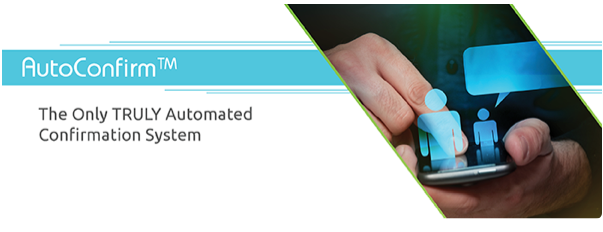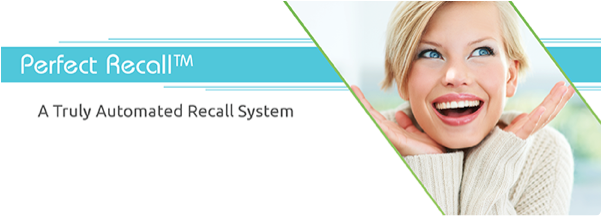Dental Innovator: Lighthouse 360 combines high tech and high touch to provide efficient patient outreach
DPR recently talked to Lighthouse 360 co-founder Brian Smith about how the company's automated patient communication service brings patients back with an individualized touch. Q: Options for patient outreach have evolved substantially over the last 5 years. How is Lighthouse working to stay on the leading edge?
DPR recently talked to Lighthouse 360 co-founder Brian Smith about how the company's automated patient communication service brings patients back with an individualized touch.
Q: Options for patient outreach have evolved substantially over the last 5 years. How is Lighthouse working to stay on the leading edge?
A: Text messaging has exploded in that period: 80% of Americans now use their cell phones for texting. We have enabled two-way text messages for every purpose for which we send messages. We’d love to tap into social media for direct patient communications, but none of them allow third parties to piggyback on their platforms. If they ever do, we’ll be there!
Q: Often, there is a push-pull between high tech and high touch. How does the Lighthouse approach address that tension?
A: I think most people think of “high touch” as “human interaction,” but I disagree with that. To me, “high touch” is being attentive to your patients and doing what they want (within reason, of course!). For example, a lot of people today don’t want a personal phone call from their dentist-instead, they prefer an email or a text. Why NOT give those patients what they want, especially when it’s cheaper and automated? On the other hand, 23% of patients don’t use either email or text, so they clearly want a more traditional form of contact-either a postcard or a phone call. We can automate all of these types, using both high- and low-tech to deliver a “high touch” approach to patient communications. Bottom line-we help our clients reach 100% of their patients the way the patients prefer.
Q: One incredible value add you have with the Lighthouse system is the free mobile website. At a $799 value, why is the company giving it away?
A: Mobile search is expected to exceed desktop search for local business information by 2015, but most dental websites look terrible on a smart phone. Even if your website comes up in a search and a prospective patient clicks on it, Google has found that more than 60% will move on if they can’t read it on a phone. That’s a problem. Mobile websites aren’t intended to have the same content as a full sized website, because people searching on a phone don’t generally want a ton of information. They want to see just enough to know this business can do what they need. We already have all the basic information needed for a mobile site: practice name and contact info, hours, payment methods, short profiles on the doctor and staff, and patient reviews. We invested in the technology to put that information into a mobile-friendly website and simply give it to our clients. We have no contract, so every month we need to prove we’re worth more than our monthly fee. Adding the free mobile website is just one way we do that.
Q: One notable feature in the Lighthouse system is “Perfect Recall.” What is the key to its efficacy?
A: There are actually two keys: it’s 100% automated, and it reaches 100% of patients. Not only do we use email, text, postcards and letters to reach every patient-we also notify the office when a patient isn’t responding to our automated messages, so they can pick up the phone and call. No one has to run a recall report from the practice management system, and no patient falls through the cracks. As the patient gets further past due, our messages become more “pointed,” to the point where we can send a letter-which is a lot more compelling than an email or a postcard-if the patient ignores all previous messages. If a patient is going to come back at all, some component of our Perfect Recall system will make that happen.
Q: Lighthouse recently merged with Yodle. How will that affect your customers, present and future?
A: Yodle’s mission is to connect local businesses with new customers. The online marketing platform – including desktop and mobile websites, unique SEO techniques, and proprietary paid search technology – Yodle uses to do that is truly impressive, and is constantly refined to work even better. One of the biggest challenges in the advertising business is proving that what you’re doing is working. Since Lighthouse sees the flow of every new patient through the dental practice, we can make the connection between the phone call to the office that came from a Yodle website, the prospective patient scheduling, and he or she actually showing up. In other words, we’ll be able to further illustrate the effectiveness of advertising, and calculate its ROI based on actual production figures. No one has ever done that before because acquisition and relationship marketing are traditionally separate. However, by the time this interview is published, we’ll be doing it for a group of Lighthouse clients who have just started using Yodle’s solutions and eventually, for any Lighthouse client who wants it. Beyond that, Lighthouse clients won’t be affected. They’ll continue to get the same benefits they’ve always received.
FEATURED SOLUTIONS

Confirming appointments may be the most significant thing that an automated patient communications system does for an office. Lighthouse 360 is the only system that automatically marks appointments “confirmed” in the schedule for every major practice management system. Why would you even consider a system that doesn’t do this?

Perfect Recall can be set up to send any combination of message types, on any schedule you want, starting as early as you want, and going for as long as you want. Start with a gentle reminder to make an appointment several weeks before the patient is due, then continue to send a series of messages over time. Each message will escalate the importance of making the appointment. Messages will continue only if necessary, all the way to a “past due by a year or more” message expressing your concerns, all within the privacy of an enveloped letter. All of this is easily automated with Lighthouse 360, with zero staff intervention.
ACTIVA BioACTIVE Bulk Flow Marks Pulpdent’s First Major Product Release in 4 Years
December 12th 2024Next-generation bulk-fill dental restorative raises the standard of care for bulk-fill procedures by providing natural remineralization support, while also overcoming current bulk-fill limitations.